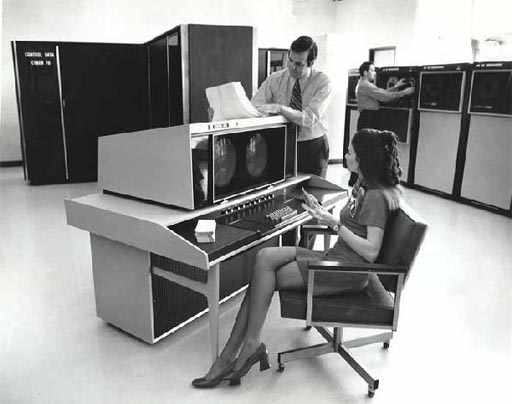IT
Infrastructure Eras.
1. Electronic accounting machine era (1930-1950):The use of large, cumbersome machines with hardwired software for sorting, adding, and reporting data.


2. General-Purpose Mainframe and minicomputer era (1959-present):The introduction and continued use of mainframes. Mainframes were the first powerful computers that could provide time sharing, multitasking, and virtual memory, and became powerful enough to support thousands of remote terminals. The mainframe era was a period of highly centralized computing controlled by programmers and system operators. Minicomputers, powerful yet less expensive computers, began to change this pattern, allowing decentralized computing customizable to individual departments or business units.



3. Personal computer era (1981-present):The appearance of the IBM PC in 1981 is usually considered the beginning of the PC era because this machine was the first to be widely adopted by American businesses. 95 percent of today's 1 billion computers are Wintel PCs, using Windows software and Intel microprocessors. PCs were standalone systems until PC operating system software in the 1990s made it possible to link them into networks.


4. Client server era (1983-present): In client/server computing, desktop or laptop computers called clients are networked to server computers that provide the clients with services and capabilities. Computer processing work is split between these two types of machines.
The client is the user point of entry, whereas the server typically processes and stores shared data, serves up Web pages, or manages network activities.
The term server refers to both the software application and the physical computer on which the network software runs. The server could be a mainframe, but today server computers typically are more powerful versions of personal computers.
A MULTI-TIERED CLIENT/SERVER NETWORK.
NB: In a multi-tiered client/server network, client requests for service are handled by different levels of servers.
5. Enterprise Internet (1992-present):The Internet networking technology Transmission Control Protocol/Internet Protocol (TCP/IP) suite enables enterprises to link disparate devices and local area networks (LANs) into single enterprise-wide networks. Integrated computing environments allows for much faster and seamless gathering and distribution of data.




Infrastructure Components.
IT infrastructure is composed of seven major components:
1. Computer hardware platforms include: client machines and server machines, as well as modern mainframes produced by IBM.
2. Operating system platforms include: platforms for client computers, dominated by Windows operating systems, and servers, dominated by the various forms of the UNIXoperating system or Linux. Operating systemsare software that manage the resources and activities of the computer and act as an interface for the user.
3. Enterprise and other software applications include: SAP, Oracle, and PeopleSoft, and middlewaresoftware that are used to link a firm's existing application systems.
4. Data management and storage: is handled by database management software and storage devices include traditional storage methods, such as disk arrays and tape libraries, and newer network-based storage technologies such as storage area networks (SANs). SANs connect multiple storage devices on dedicated high-speed networks.
5. Networking and telecommunications platforms include: Windows server operating systems, Novell, Linux, and UNIX. Nearly all LAN and many wide area networks (WANs) use the TCP/IP standards for networking.
6. Internet platforms: overlap with, and must relate to, the firm's general networking infrastructure and hardware and software platforms. Internet-related infrastructure includes the hardware, software and services to maintain corporate Web sites, intranets, and extranets, including Web hosting services and Web software application development tools. A Web hosting servicemaintains a large Web server, or series of servers, and provides fee-paying subscribers with space to maintain their Web sites.
7. Consulting and system integration services: are relied on for integrating a firm's legacy systemswith new technology and infrastructure and providing expertise in implementing new infrastructure along with relevant changes in business processes, training, and software integration. Legacy systems are generally older transaction processing systems created for mainframe computers that continue to be used to avoid the high cost of replacing or redesigning them.
THE IT INFRASTRUCTURE ECOSYSTEM
Moore's Law and Micro-processing Power.
There are several features or characteristics of information technology today that act as drivers toward the expansion and further development of technology. An important one is Moore’s Law. Moore's lawstated in 1965 that microprocessingpower doubles every two years. Variations of this law assert that:
a) Microprocessingpower doubles every 18 months
b) Computer power doubles every 18 months
c) The price of computing halves every 18 months.
FALLING COST OF CHIPS.

No comments:
Post a Comment